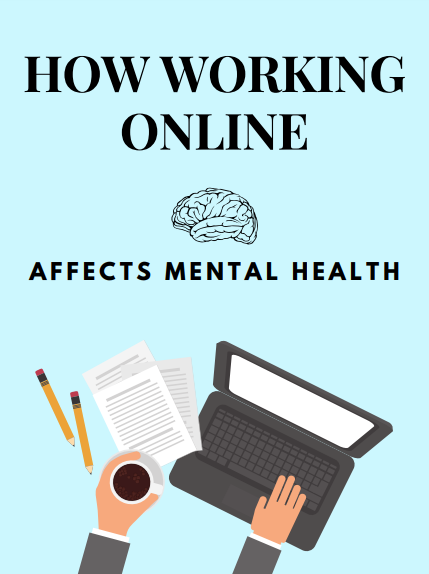Healthy Mind, Healthy Living: How Working Online Affects Mental Health
October 18, 2020
The COVID-19 pandemic has brought significant changes to students’ work environments, making much of learning online. As some students at Miami Palmetto Senior High School move to physical school and others stay at home via the My School Online model, the technological and social divide remains more evident. Nevertheless, students can still balance their mental health, even when learning through a screen.
Science Behind the Screen
Staring at a screen for hours upon hours can affect one’s brain and mental health in many ways. The average teen already spends seven hours and 22 minutes a day on a screen — not including time spent on homework or at school — according to a Common Sense Research poll.
However, the COVID-19 pandemic has increased this daily usage of screen time. Many teachers at MPSH use virtual learning to accommodate a paperless learning experience for both online and physical students by using platforms such as Microsoft Teams or Edmodo.
This extended screen time use can affect one’s brain, too, sometimes leading to computer vision syndrome, also known as digital eye strain. CVS occurs due to the visual demands of looking at a screen, such as poor lighting or glare. As a result, students may experience eyestrain, headaches, exhaustion, blurred vision and neck and shoulder pains by looking at a screen for too long.
On another note, distanced learning, whether at home or at school, can make one feel more isolated than usual. Social distance rules and smaller class sizes at school have added to the issue. Moreover, online students who cannot interact with their peers at school may feel detached and isolated from their classmates. In fact, three in 10 students experience emotional harm from online school.
Helping Your Mental Health
While many students may feel caught up in school work, their mental health remains just as important.
Students learning virtually or learning in physical schools through a device should take breaks using the 20-20-20 rule, according to the American Optometric Association. This rule suggests that people take a 20-second break from devices to view something 20 feet away every 20 minutes. The 20-20-20 rule can help reduce digital eye strain.
Students can also view their devices in certain ways to reduce digital eye strain at school. For instance, students should have a fixed posture to view the computer screen more comfortably. Students should also position their computers to avoid glare, such as by wearing anti-glare glasses, reducing the brightness of the screen or of the room. At night, students should turn their devices off 30 minutes before going to sleep.
Once students have free time, they should also take the opportunity to go outside and get fresh air, which can help relieve stress, restore mental energy, improve concentration and help with sharper thinking and creativity.
Virtual learning, whether at home or at physical school, can affect one’s mental health, making one feel tired or isolated. However, by keeping in touch with one’s mind, students can reduce the negative effects of learning through a screen and adjust to this new way of learning.
















